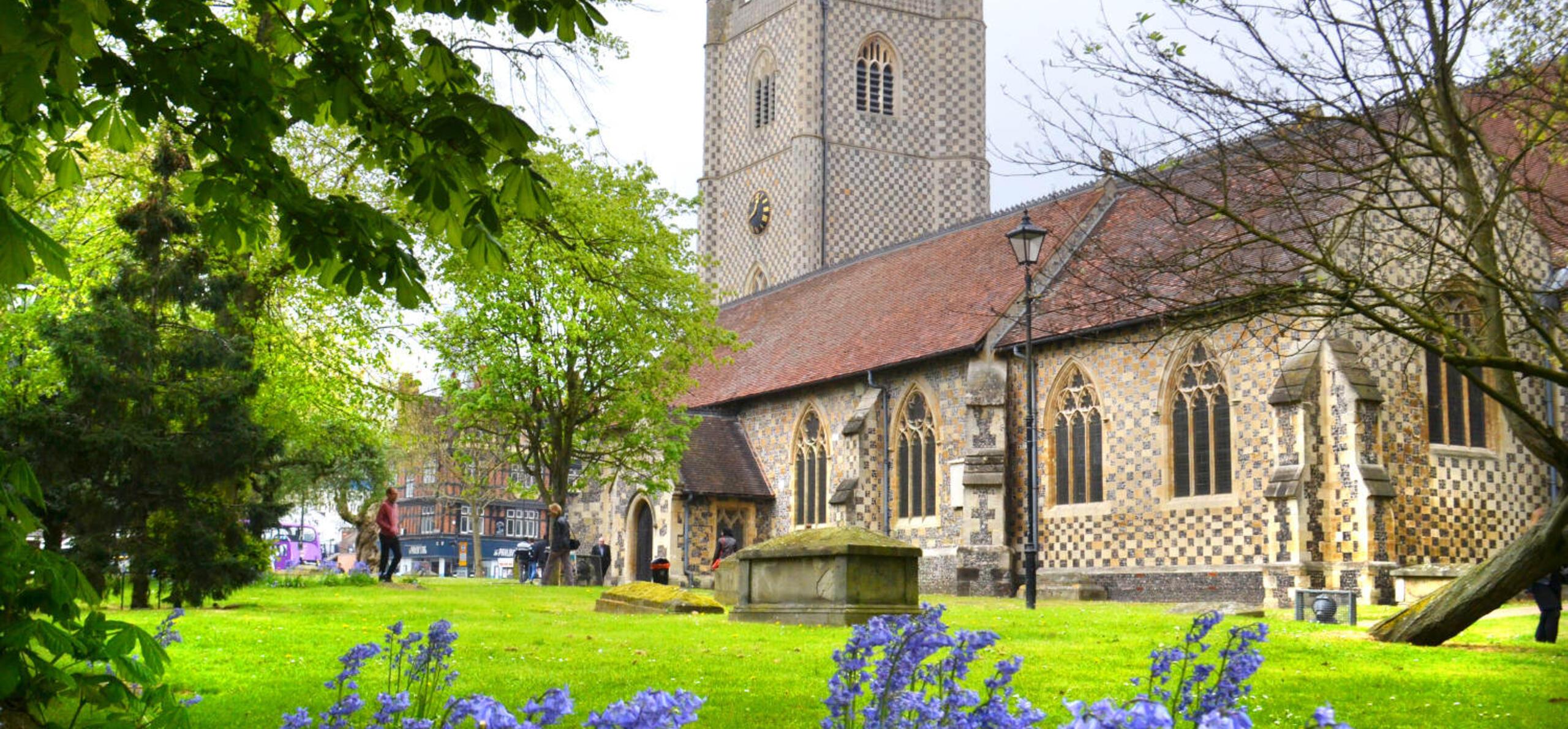This blog is the first in a series exploring many of the most commonly asked questions about the history of Reading (Berkshire, UK). We begin by looking at what our town was like more than a thousand years ago, in the time of the Saxons, Vikings and Normans. Learn more by visiting the Story of Reading Gallery at Reading Museum.
How old is Reading?
Reading appeared in the 6th century AD, 1600 years ago, when Saxons began settling in this part of the Thames Valley. The earliest-known documentary reference occurred in 870 AD when the Vikings camped in Reading (see below).
The first people to live in the Reading area, where the River Kennet joins the River Thames, were wandering hunter-gatherers more than 500,000 years ago. From around 2500 BC, there is archaeological evidence of Bronze Age families living in roundhouses in the river valleys and working with iron tools by 800 BC. The main Iron Age tribal centre of the Atrebates was at modern-day Silchester, 10 miles south of Reading, which became the Roman town of Calleva.
Fast forward a millennium. Archaeological evidence dating to 300 AD revealed Roman farms and small settlements across the Reading area. Historians have speculated there was a trading port for Calleva at Reading in the Roman period. The Thames was probably the northern boundary of the Atrebates region. After the end of Roman rule in the 400s AD, new settlers, the Anglo-Saxons, came to Britain from northern Europe.
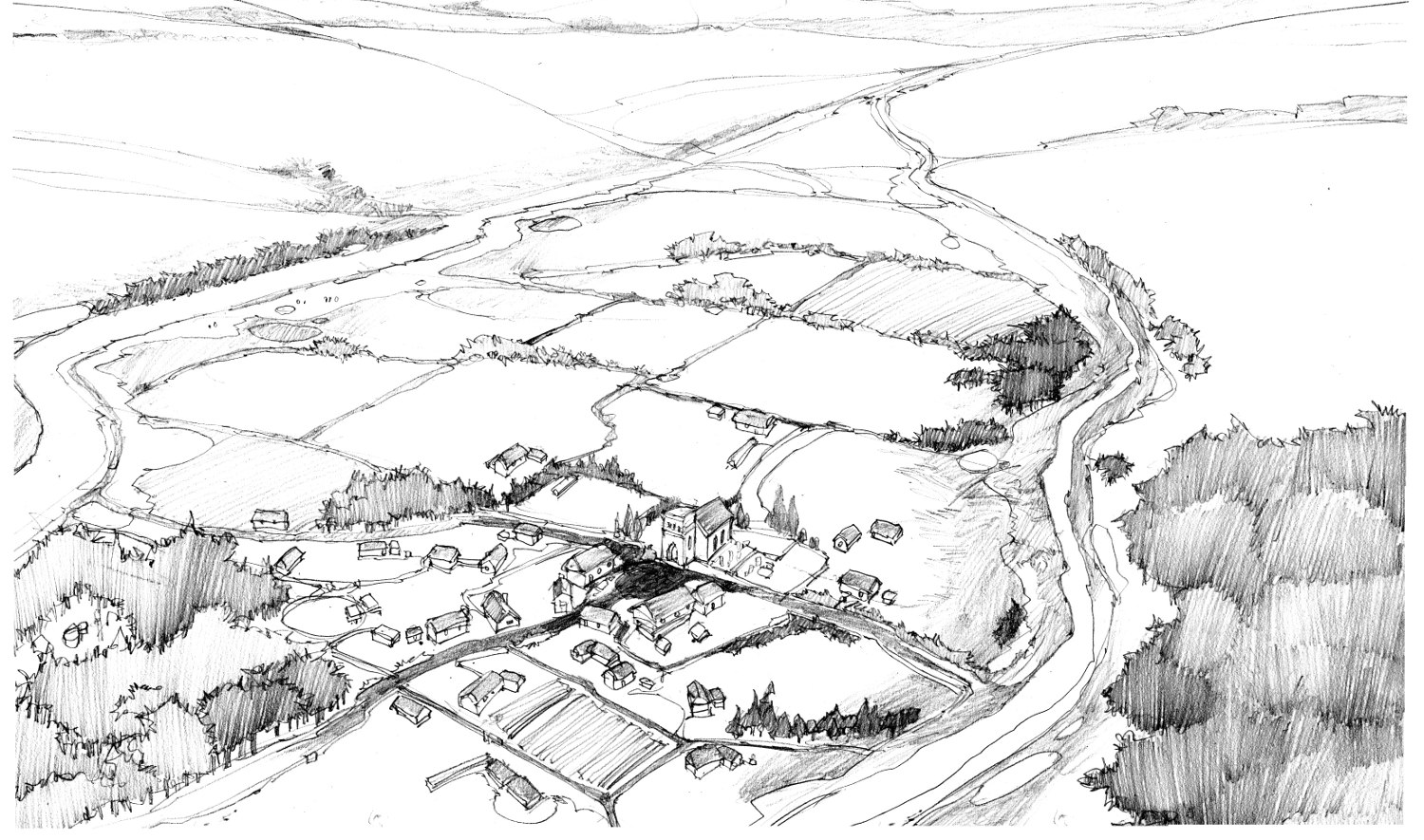
An artist's impression of Saxon Reading showing the Minster church
Why is the town called Reading?
The pronunciation of Reading as 'Red-ing' provides a clue to its Saxon origins. Historians believe its name links to a group or tribe of early Saxons, the Rēadingas in Old English, who settled here in the 500s AD. So, it probably means 'Reada’s people'. It has been suggested the name Reada means ‘the red one’. We are unsure what Reada would have made of the current fashion of referring to Reading as 'The Ding'!
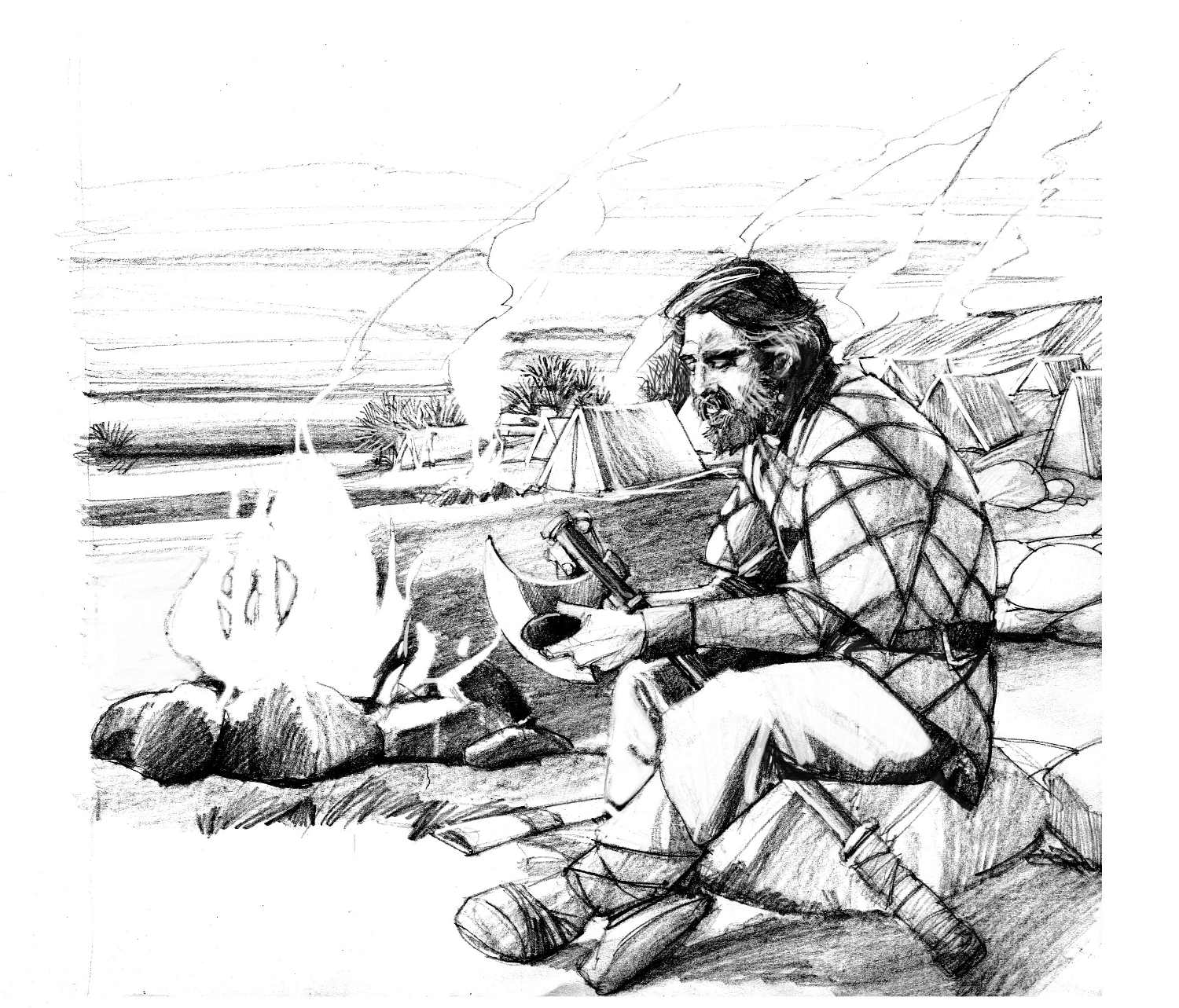
An artist's impression of the Viking camp at Reading in 870-871 AD
Was Reading in Mercia or Wessex?
The Life of King Alfred tells us that in autumn 870 AD, the Vikings left East Anglia and entered Wessex, where they came to the royal 'vill' called Reading on the south bank of the Thames in the district of Berkshire.
Throughout the eighth and ninth centuries the River Thames was the heart of a frontier zone between Mercia and Wessex. Controlling the Thames border zone gave control of the most important trade and communication artery in southeast England, a significant political and economic gateway to London, Kent, and the wider world.
Reading was the centre of a royal estate in Wessex, and the Thames formed the border between Wessex to the south and Mercia to the north. The Vikings set up a winter base at Reading, strategically located at the royal estate centre and exploiting the many winter supplies gathered by local people.
In 871 AD, an Anglo-Saxon army led by the future King Alfred the Great drove the Vikings from Wessex. Alfred successfully secured his kingdom and went on to integrate Wessex and Mercia into what was later to become the kingdom of England. You can find out more in our blog about Viking Reading.

Alfred the Great statue at Wantage. (Credit: Philip Jelley, Wikipedia Commons)
Was there a Saxon nunnery in Reading?
The vill (royal estate centre) at Reading developed into a small town with a market by 900 AD. The nunnery (a monastery for women) was possibly founded in the reign of Edgar (959-978 AD) or Ethelred II (978 to 1013), probably around an existing estate or minster church. It was most likely located on the site of today's Reading Minster (St Mary’s Church). Reading Minster is one of 33 important Anglo-Saxon church sites founded between seventh and eleventh centuries along the length of the River Thames, from upper reaches in Gloucestershire to its mouth in Kent.
In 1839, a late 9th-century hoard of silver coins was found in a coffin in the Minster's churchyard, which suggests the coins were buried during the Viking over-wintering at Reading in 870-71 AD. The nunnery may have been damaged when the Vikings overwintered again at Reading in 1006. Leofrun was the abbess in the early part of eleventh century.
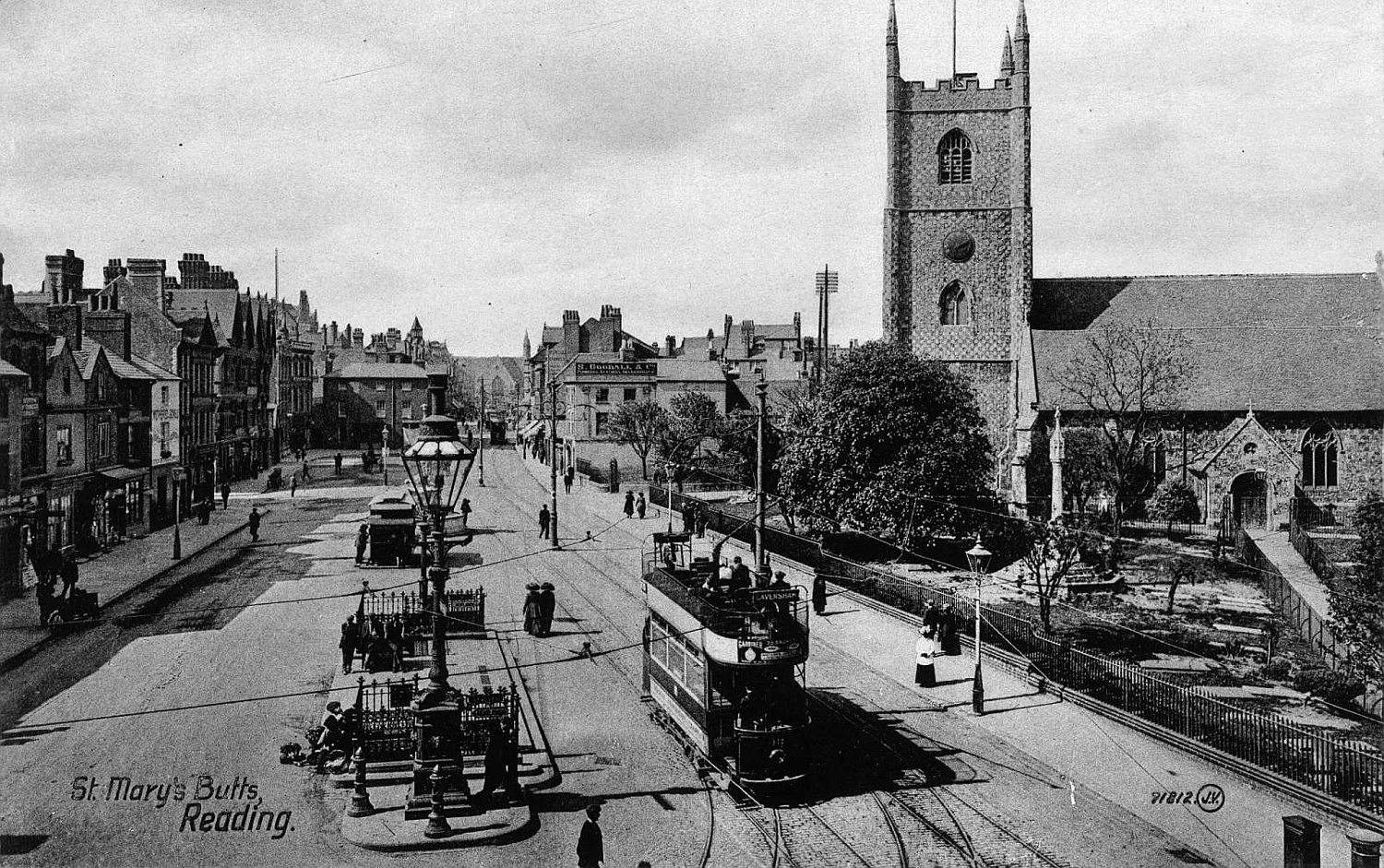
St Mary's church, Reading Minster, probably the site of a Saxon nunnery
What happened to Reading at the Norman Conquest of 1066?
In 1066 AD, William of Normandy invaded England and defeated King Harold Godwinson. The 70m long Bayeux Tapestry chronicles the legendary tale of the Norman conquest, and Reading Museum is home to Britain’s unique full-size Victorian replica.
By 1066, the part of the Reading now taken up by the Oxford Road was farmland owned by an Abbess called Leveva. She was probably the head of Reading’s Saxon nunnery.
By 1071, England's new king, William the Conqueror, had taken the nunnery’s land and given it to his newly founded Battle Abbey at Hastings, which he built to commemorate his victory in the Battle of Hastings. You can trace this connection to Battle Abbey in local place names across west Reading: Battle School, Battle Library, and the former Battle Hospital on the Oxford Road.
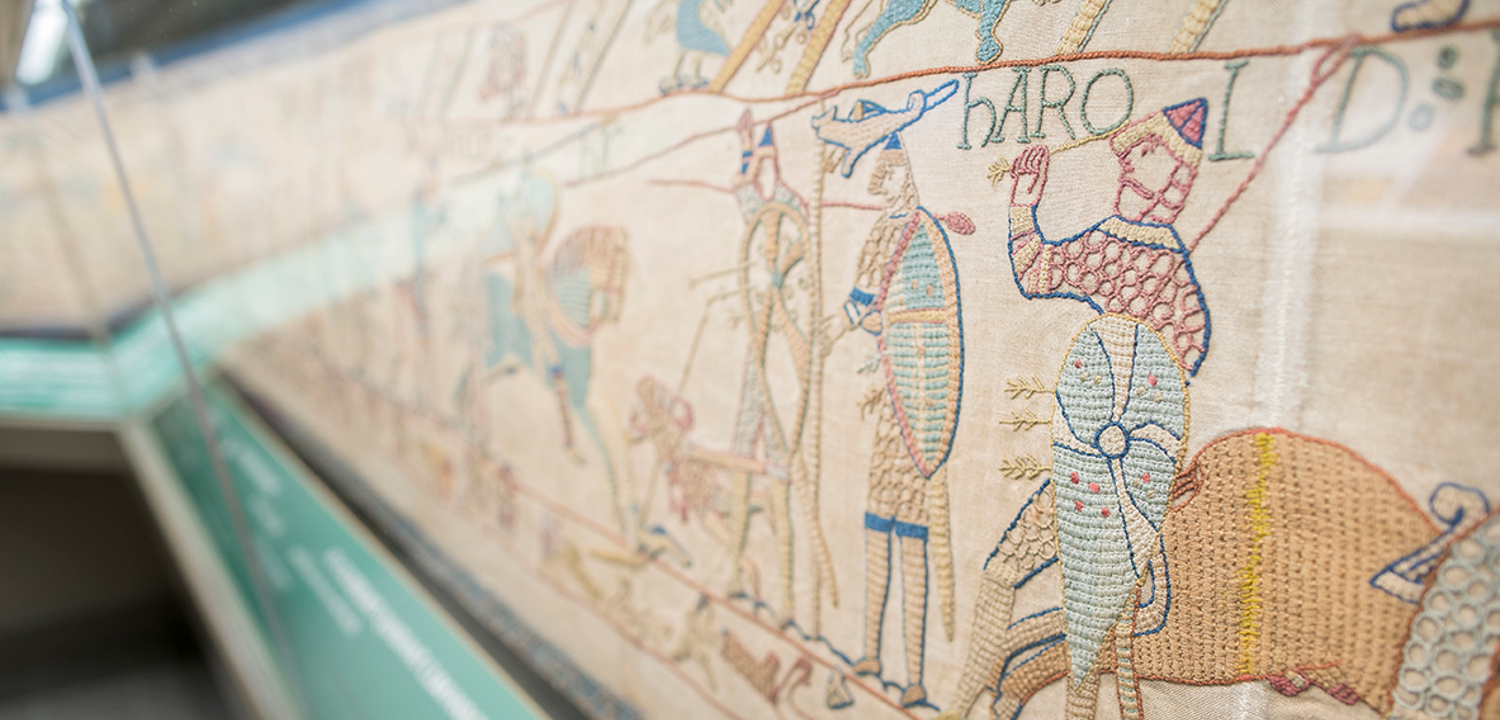
Britain's Bayeux Tapestry at Reading Museum
Coming soon: A short history of Reading Abbey
In part two, we will answer some of the frequently asked questions about Reading's royal abbey, which was founded in 1121 AD by William the Conqueror's youngest son, King Henry I.
